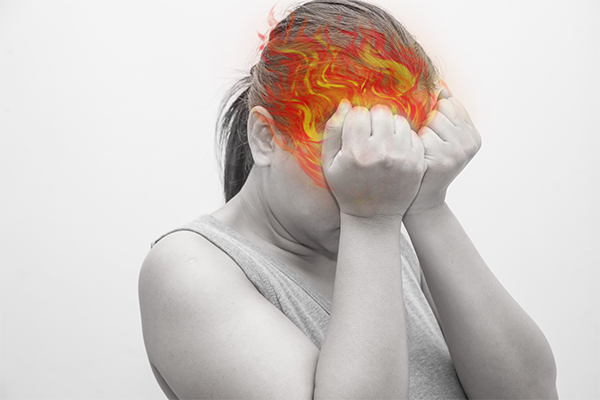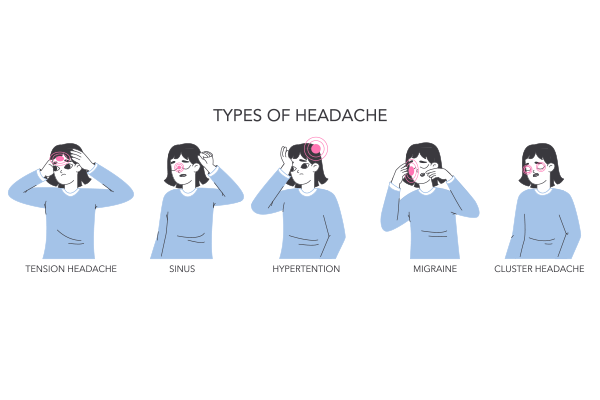
Cluster headaches are often described as one of the most painful types of headaches. Unlike migraines, which can last for hours or even days, cluster headaches are characterized by their short duration but extreme intensity. They are called "cluster" headaches because they tend to occur in groups or clusters, often at the same time each day during a cluster period. These periods can last for weeks or even months, followed by remission periods where the headaches stop completely.
Historically, cluster headaches have been known as "suicide headaches" due to the excruciating pain they cause. Famous cases, such as that of the writer Lewis Carroll, who is believed to have suffered from cluster headaches, highlight the severe impact of this condition.
Here's a compact table summarizing the symptoms, triggers, and treatments for cluster headaches:
|
Category |
Details |
| Symptoms |
|
|
Triggers |
|
|
Treatments |
|
Synopsis
The Science Behind the Pain
The exact cause of cluster headaches is not fully understood. They are believed to involve the hypothalamus, a part of the brain that regulates biological rhythms. During a cluster headache, the hypothalamus may trigger the release of certain chemicals. These chemicals cause blood vessels in the brain to dilate, leading to intense pain.
Neurotransmitters like serotonin and histamine also play a role. The pain is typically one-sided. It can be accompanied by symptoms such as a drooping eyelid, red and watery eyes, and nasal congestion on the affected side. The regularity of the attacks suggests a link to the body's circadian rhythms, which are controlled by the hypothalamus.
Risk Factors and Complementary Treatments for Cluster Headaches
Risk Factors
-
Gender: Men are more likely to suffer from cluster headaches than women.
-
Smoking: Tobacco use increases the risk.
-
Family History: A family history of cluster headaches can elevate the risk.
Despite these known triggers and risk factors, many myths and misconceptions persist, such as the belief that cluster headaches are just severe migraines or that they are caused by poor lifestyle choices.
Complementary Treatments
-
Acupuncture: This traditional Chinese medicine technique involves inserting thin needles into specific points on the body to relieve pain and improve overall well-being.
-
Chiropractic Care: Focuses on spinal adjustments to improve nervous system function and reduce headache frequency and intensity.
-
Herbal Remedies: Certain herbs, such as feverfew and butterbur, may help reduce the frequency and severity of headaches.
These complementary treatments can be used alongside conventional therapies to help manage cluster headaches more effective
Recognizing the Symptoms
|
Symptom |
Description |
|
Severe, one-sided pain |
Intense, burning or piercing pain typically around one eye or temple. |
|
Restlessness |
Patients often feel agitated and may pace or rock back and forth. |
|
Red and watery eyes |
The eye on the affected side may become red and tear excessively. |
|
Nasal congestion |
Stuffy or runny nose on the same side as the headache. |
|
Drooping eyelid |
The eyelid on the affected side may droop (ptosis). |
|
Facial sweating |
Increased sweating on the forehead or face on the affected side. |
|
Pupil constriction |
The pupil on the affected side may become smaller (miosis). |
|
Swelling around the eye |
Swelling or puffiness around the eye on the affected side. |
|
Sensitivity to light |
Increased sensitivity to light (photophobia) on the affected side. |
|
Sensitivity to sound |
Increased sensitivity to sound (phonophobia) on the affected side. |
Personal stories from sufferers can provide a vivid picture of what it's like to live with cluster headaches. For instance, one patient described the pain as feeling like "a hot poker being driven through my eye."
Consult our neurologists in Jaipur if you are experiencing cluster headache symptoms and get treatment.
Journey to Diagnosis
Diagnosing cluster headaches can be challenging. The process typically involves:
-
Medical history and physical examination: A detailed history of the headaches, including their frequency, duration, and associated symptoms.
-
Diagnostic tests: These may include MRI or CT scans to rule out other conditions.
-
Criteria for diagnosis: According to the International Classification of Headache Disorders, a diagnosis of cluster headache requires at least five attacks with specific characteristics.
Many patients face a long journey to diagnosis, often being misdiagnosed with migraines or sinus headaches. Stories of misdiagnosis highlight the importance of seeing a specialist who is familiar with cluster headaches.
Innovative Cluster Headache Treatment Approaches
Treatment for cluster headaches focuses on both acute relief and prevention. Acute treatments include:
-
Oxygen therapy: Inhaling pure oxygen through a mask can provide rapid relief.
-
Triptans: These medications, commonly used for migraines, can also be effective for cluster headaches.
Preventive treatments aim to reduce the frequency and severity of attacks. These include:
-
Verapamil: A calcium channel blocker that is often the first choice for prevention.
-
Corticosteroids: These can be effective for short-term prevention during a cluster period.
-
Lithium: Sometimes used for chronic cluster headaches.
Cutting-edge treatments and technologies, such as neuromodulation devices, are also being explored. Success stories with new therapies, such as the use of non-invasive vagus nerve stimulation, offer hope for those who have not found relief with traditional treatments.
Consult our neurology hospital in Jaipur if you need cluster headache treatment
Living with Cluster Headaches: Real-Life Strategies
Managing cluster headaches involves more than just medical treatment. Day-to-day management tips include:
-
Keeping a headache diary: Tracking the frequency, duration, and triggers of headaches can help in managing the condition.
-
Avoiding known triggers: This might involve lifestyle changes, such as avoiding alcohol or strong smells.
-
Stress management: Techniques such as yoga, meditation, and deep breathing can help reduce stress, which may trigger attacks.
Balancing work, family, and health can be challenging, but many people find ways to live fulfilling lives despite their condition. Inspirational stories of resilience, such as those of individuals who have run marathons or achieved professional success while managing cluster headaches, can provide motivation and hope.
|
Category |
Details |
|
Navigating Work with Cluster Headaches |
|
|
Workplace Accommodations |
|
The Future of Cluster Headache Research
Research into cluster headaches is ongoing, with several promising areas of study. Breakthroughs on the horizon include:
-
New medications: Clinical trials are exploring the efficacy of new drugs specifically designed for cluster headaches.
-
Genetic research: Understanding the genetic basis of cluster headaches could lead to more targeted treatments.
-
Patient involvement: Patients can participate in research studies and clinical trials, contributing to the advancement of knowledge and treatment options.
Conclusion
Living with cluster headaches can be incredibly challenging, but there is hope. Advances in research and treatment are providing new options for relief, and support systems are available to help manage the condition. By understanding the causes, symptoms, and treatments, those affected by cluster headaches can take steps towards a better quality of life. If you or someone you know is suffering from cluster headaches, seek help from our healthcare professional and explore the resources available. Together, we can find ways to manage this condition and live well.
For those seeking expert care and treatment, Manipal Hospital Jaipur offers comprehensive services for headache management. With a team of experienced neurologists and state-of-the-art facilities, Manipal Hospital is dedicated to providing personalized care and effective treatment options for those suffering from cluster headaches. Visit our website to learn more and take the first step towards relief and recovery.
FAQ's
Cluster headaches are characterized by severe, one-sided pain, typically around the eye or temple, restlessness, red and watery eyes, nasal congestion, drooping eyelid, facial sweating, pupil constriction, swelling around the eye, and sensitivity to light and sound.
The exact cause is not fully understood, but they are believed to involve the hypothalamus, which regulates biological rhythms. Triggers can include alcohol, strong smells, weather changes, and stress. Genetic factors and lifestyle habits may also play a role.
Diagnosis involves a detailed medical history, physical examination, and possibly diagnostic tests like MRI or CT scans to rule out other conditions. The International Classification of Headache Disorders provides specific criteria for diagnosis.
Acute treatments include oxygen therapy and triptans. Preventive treatments may involve verapamil, corticosteroids, and lithium. New treatments and technologies, such as neuromodulation devices, are also being explored.
Keeping a headache diary, avoiding known triggers, and practising stress management techniques can help. Support groups and online communities provide valuable resources and a sense of community. Seeking professional medical advice is crucial for effective management.





















 7 Min Read
7 Min Read






















